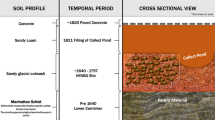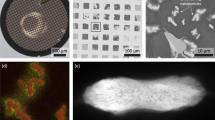Abstract
THE Mössbauer effect provides a useful technique for the determination of the oxidation state of iron and the symmetry of its immediate environment1,2. This effect refers to the recoil-free emission and subsequent absorption of gamma radiation by similar nuclei. The two main parameters which may be derived from such spectra are the isomer shift, which is a measure of the s-electron density at the nucleus, and the quadrupole splitting, which is a reflexion of the electric field gradient at the nucleus. These two parameters provide information about the local symmetry around the iron atom and its oxidation state. Mössbauer spectroscopy provides the only available technique for the direct examination of solid samples which can give these results—wet methods provide no information about the iron lattice sites and oxidation states derived from such experiments are open to doubt. This approach has already proved its worth in the study of the silicate minerals, where these parameters have been studied for minerals of known structure containing substituted iron atoms, enabling a correlation to be established between these parameters and the iron sites and oxidation states2.
This is a preview of subscription content, access via your institution
Access options
Subscribe to this journal
Receive 51 print issues and online access
$199.00 per year
only $3.90 per issue
Buy this article
- Purchase on Springer Link
- Instant access to full article PDF
Prices may be subject to local taxes which are calculated during checkout
Similar content being viewed by others
References
Wertheim, G. K., Mössbauer Effect, Principles and Applications (Academic Press, NY, 1964).
Bancroft, G. M., and Maddock, A. G., Geochim. Cosmochim. Acta, 31, 2219 (1967).
Weaver, C. E., Wampler, J. M., and Pecuil, T. E., Science, 156, 504 (1967); Taylor, G. L., Ruotsala, A. P., and Keeling, jun., R. O., Clays and Clay Minerals, 16, 381 (1968).
Marshall, C. J., Surrey Arch. Coll., 35, 79 (1924).
Author information
Authors and Affiliations
Rights and permissions
About this article
Cite this article
COUSINS, D., DHARMAWARDENA, K. Use of Mössbauer Spectroscopy in the Study of Ancient Pottery. Nature 223, 732–733 (1969). https://doi.org/10.1038/223732a0
Received:
Issue Date:
DOI: https://doi.org/10.1038/223732a0
This article is cited by
-
Mössbauer studies of Algerian ancient pottery
Journal of Radioanalytical and Nuclear Chemistry Letters (1996)
-
Mössbauer study of the Ru porcelain of Chinese Song Dynasty and Yuan Dynasty
Hyperfine Interactions (1994)
-
Studies of archaeological problems by Mössbauer spectroscopy
Hyperfine Interactions (1992)
-
The use of m�ssbauer spectroscopy of iron in clay mineralogy
Physics and Chemistry of Minerals (1981)
-
Examination of ancient pottery using the scanning electron microscope
Nature (1975)
Comments
By submitting a comment you agree to abide by our Terms and Community Guidelines. If you find something abusive or that does not comply with our terms or guidelines please flag it as inappropriate.



